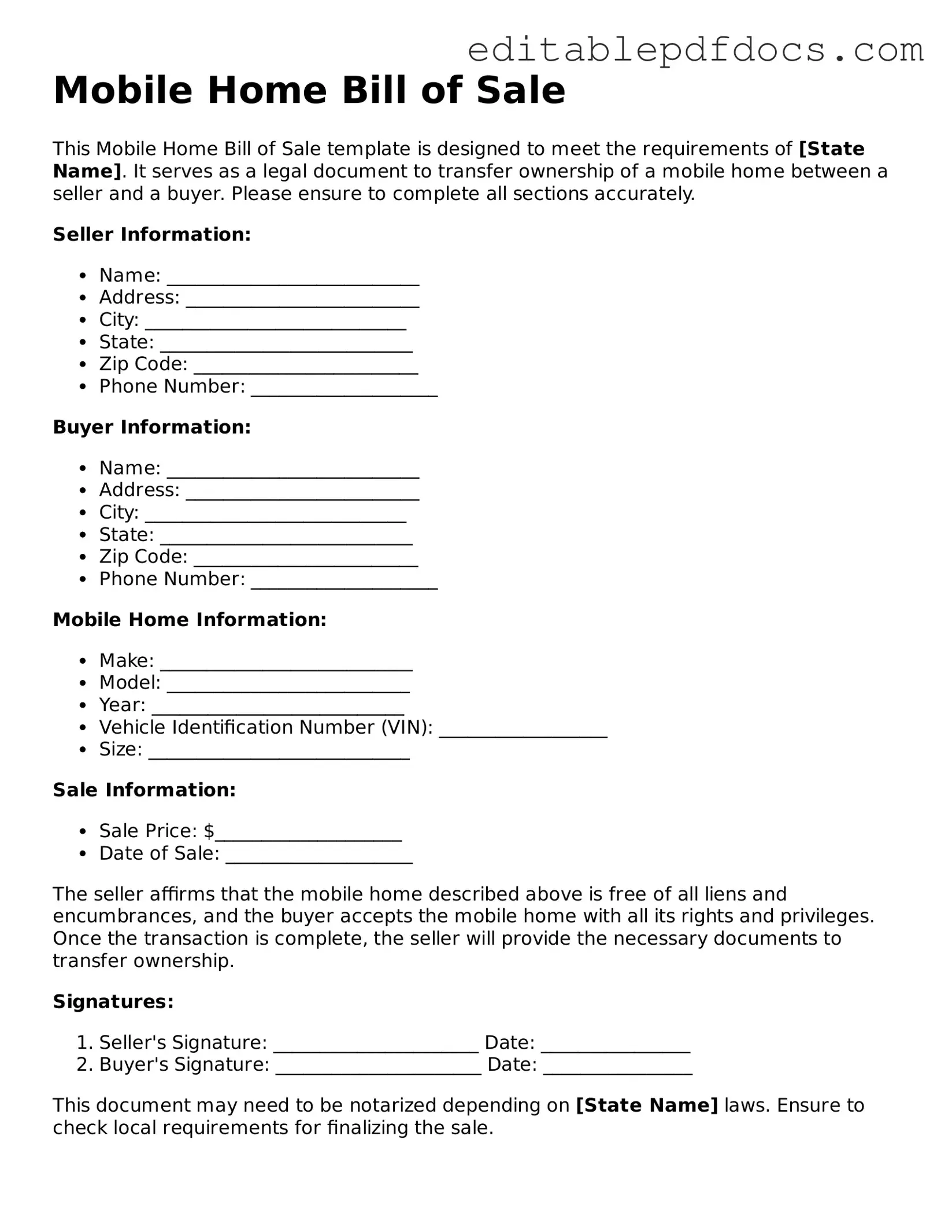Filling out the Mobile Home Bill of Sale form can be a straightforward process, but many individuals encounter common mistakes that can lead to complications. One prevalent error is the omission of essential details. Buyers and sellers must ensure that all fields are completed accurately. Missing information, such as the mobile home’s vehicle identification number (VIN) or the correct names of the parties involved, can render the document invalid.
Another frequent mistake is incorrect or unclear descriptions of the mobile home. It is crucial to provide a precise description, including the make, model, year, and any distinguishing features. Vague descriptions may lead to disputes later, as they can create confusion regarding the property being sold.
Failure to date the document is also a common oversight. Without a date, it can be difficult to establish when the sale occurred, which may affect the transfer of ownership and any applicable taxes. Both parties should ensure that the date is clearly indicated on the form.
Signatures are vital for the validity of the Bill of Sale. Some individuals neglect to sign the document or may forget to have it signed by both the buyer and seller. Both signatures are necessary to confirm that the transaction is agreed upon by all parties involved.
Another mistake involves not having the form notarized when required. While notarization may not be mandatory in every state, it can provide an added layer of protection and authenticity. Checking local regulations can help determine if notarization is necessary.
Many people also fail to keep copies of the completed Bill of Sale. Retaining a copy is important for both parties, as it serves as proof of the transaction and can be useful for future reference or in case of disputes.
Some individuals overlook the importance of including payment details. Clearly stating the purchase price and payment method can prevent misunderstandings. This information should be explicitly mentioned to ensure both parties are on the same page regarding the financial aspects of the sale.
Another error is neglecting to review the entire form before submission. It is advisable to double-check all entries for accuracy and completeness. Errors can lead to delays or complications in the transfer process.
Lastly, individuals sometimes fail to consult with professionals when necessary. If there are uncertainties regarding the process or legal requirements, seeking guidance from a legal expert can help avoid pitfalls and ensure compliance with state laws.
